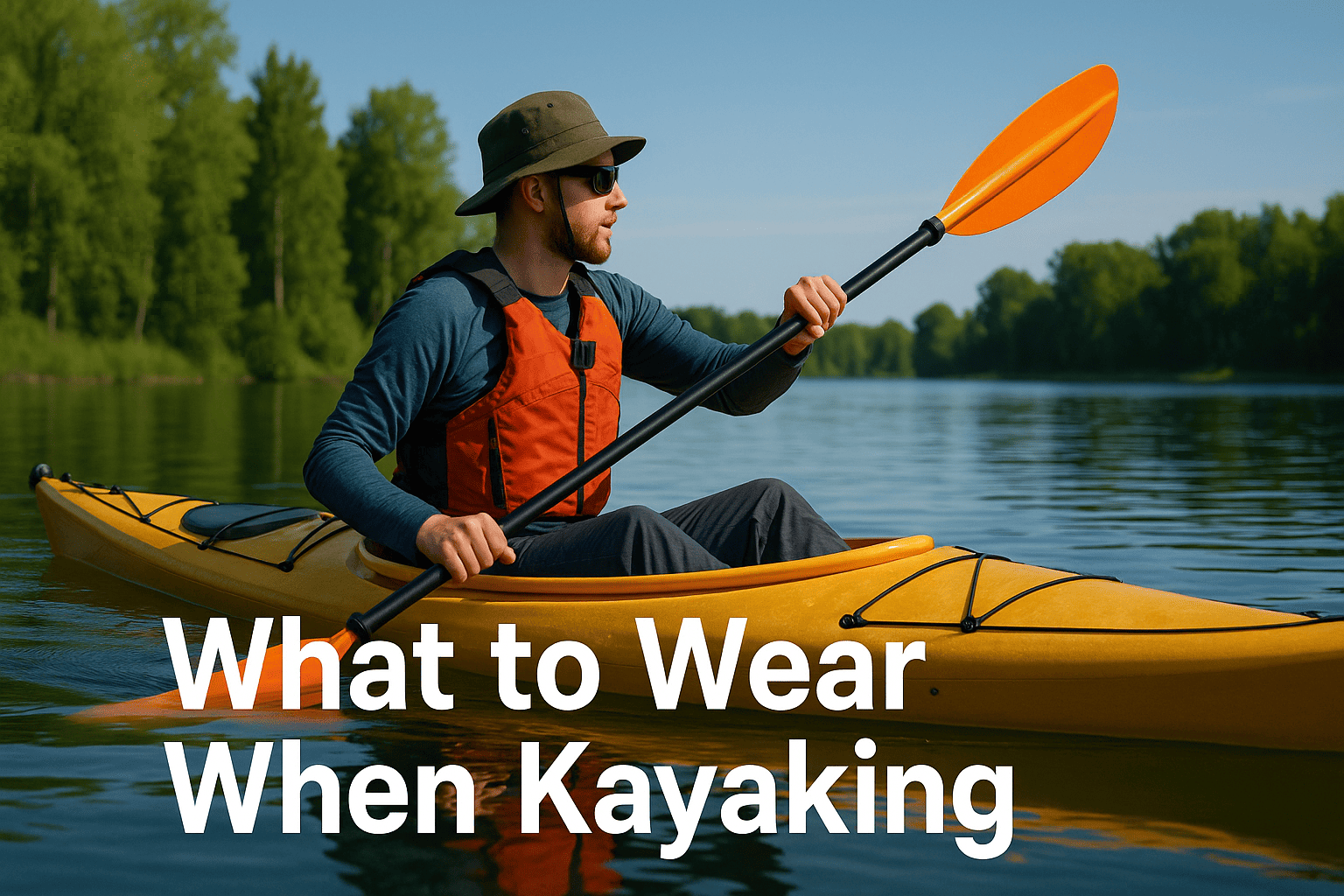What to Wear When Kayaking: Essential Gear & Clothing

Kayaking is a fantastic way to explore waterways, enjoy the great outdoors, and get a good workout. However, dressing appropriately is crucial to ensure comfort, safety, and an overall enjoyable experience on the water. This guide will cover everything you need to know about what to wear when kayaking, including tips for different weather conditions and types of kayaking adventures.
Table of Contents
Introduction
Kayaking offers a diverse range of experiences, from serene lake paddling to adrenaline-pumping whitewater adventures. What you wear can significantly impact your comfort, performance, and safety. The right clothing can protect you from the elements, prevent hypothermia, and enhance your paddling experience.
Basic Kayaking Outfit
Life Jacket or PFD
The most critical piece of gear for any kayaker is a Life Jacket or Personal Flotation Device (PFD). Here are key features to look for:
- Fit and Comfort: Ensure it fits snugly without restricting movement.
- Buoyancy: Check that it provides adequate buoyancy for your weight.
- Design: Opt for a design specific to kayaking, which offers more freedom of movement and features like pockets for gear.
Kayaking Tops
Choosing the right top is essential for both comfort and protection:
- Rash Guards: These are great for warm weather, providing UV protection and reducing chafing.
- Quick-Drying Shirts: Synthetic materials like polyester or nylon are ideal as they wick moisture away from your skin.
- Neoprene Jackets: Perfect for colder conditions, neoprene offers insulation and flexibility.
Kayaking Bottoms
Your choice of bottoms will depend on the weather and water temperature:
- Board Shorts or Swim Trunks: Suitable for warm weather kayaking.
- Neoprene Pants: These provide insulation in cooler conditions.
- Dry Pants: Ideal for cold weather, they keep water out and can be layered over other clothing.
Layering for Different Conditions
Layering is key to staying comfortable and safe in varying weather conditions.
Warm Weather Kayaking
In warm weather, focus on lightweight, breathable, and quick-drying clothing:
- Lightweight Tops and Bottoms: Look for synthetic materials that wick moisture away.
- Sun Protection: Long-sleeved shirts and hats to protect against UV rays.
- Hydration Gear: Consider a hydration pack or easy-to-access water bottle.
Cold Weather Kayaking
Cold weather requires more insulation and protection from the elements:
- Base Layer: Wear moisture-wicking thermal tops and bottoms.
- Insulating Layer: Fleece or wool for warmth.
- Outer Layer: Waterproof and windproof jackets and pants, preferably with sealed seams to prevent water ingress.
- Neoprene or Drysuit: For extremely cold conditions, a drysuit is best as it keeps you dry and warm.
Footwear for Kayaking
Choosing the right footwear is essential for protecting your feet and ensuring comfort:
- Water Shoes: Lightweight, quick-drying, and provide good grip.
- Neoprene Booties: Offer warmth and protection in colder conditions.
- Sandals: Suitable for warm weather but ensure they have good traction and secure straps.
Accessories and Extras
Gloves
- Paddling Gloves: Protect your hands from blisters and cold. Look for gloves with good grip and flexibility.
Hats and Sunglasses
- Hats: A wide-brimmed hat or a cap with a strap to protect from the sun.
- Sunglasses: Polarized sunglasses to reduce glare from the water, with a retainer strap to keep them secure.
Waterproof Bags
- Dry Bags: Essential for keeping your belongings dry. Choose sizes based on what you need to carry.
- Deck Bags: Attach to the kayak for easy access to gear.
Special Considerations
Whitewater Kayaking
For whitewater kayaking, extra protection and specialized gear are necessary:
- Helmet: Protects against head injuries from rocks or the kayak itself.
- Spray Skirt: Keeps water out of the kayak.
- Wetsuit or Drysuit: Depending on water temperature, for added protection and warmth.
Sea Kayaking
Sea kayaking demands clothing and gear that can handle long hours and changing conditions:
- Spray Jacket: Waterproof and breathable, to protect from sea spray and wind.
- Layered Clothing: Ensure you can adjust to varying temperatures throughout the day.
- Safety Gear: Always carry a whistle, flares, and a VHF radio for communication.
Frequently Asked Questions (FAQs)
1. What should I wear under a drysuit?
Wear moisture-wicking thermal layers under a drysuit to stay warm and dry. Avoid cotton as it retains moisture and can lead to hypothermia.
2. Can I wear regular shoes while kayaking?
Regular shoes are not recommended as they can retain water, become heavy, and lack the necessary grip. Opt for water shoes or neoprene booties.
3. How do I choose the right size PFD?
The PFD should fit snugly without being restrictive. Adjust all straps and make sure it doesn’t ride up over your chin or ears when pulled upwards.
4. Is it necessary to wear a helmet while kayaking?
A helmet is essential for whitewater kayaking or any conditions where there is a risk of hitting your head on rocks or the kayak.
5. How can I protect myself from the sun while kayaking?
Wear long-sleeved, UV-protective clothing, a wide-brimmed hat, and polarized sunglasses. Apply waterproof sunscreen on exposed skin.
Conclusion
Dressing appropriately for kayaking ensures a comfortable and safe experience, regardless of the conditions. By choosing the right gear and layering effectively, you can enjoy your time on the water to the fullest. Always prioritize safety and prepare for the specific conditions you’ll encounter. Happy paddling!



